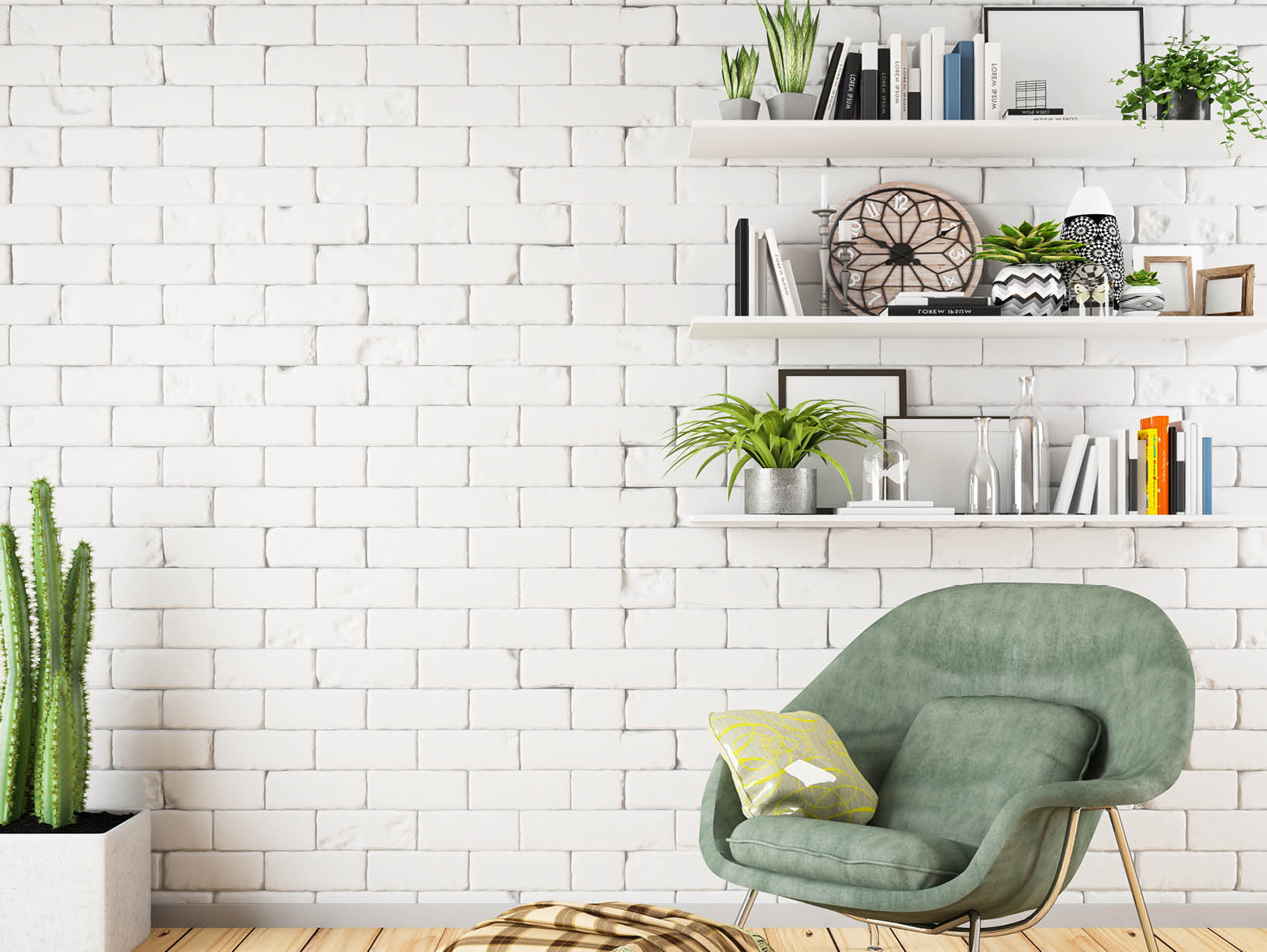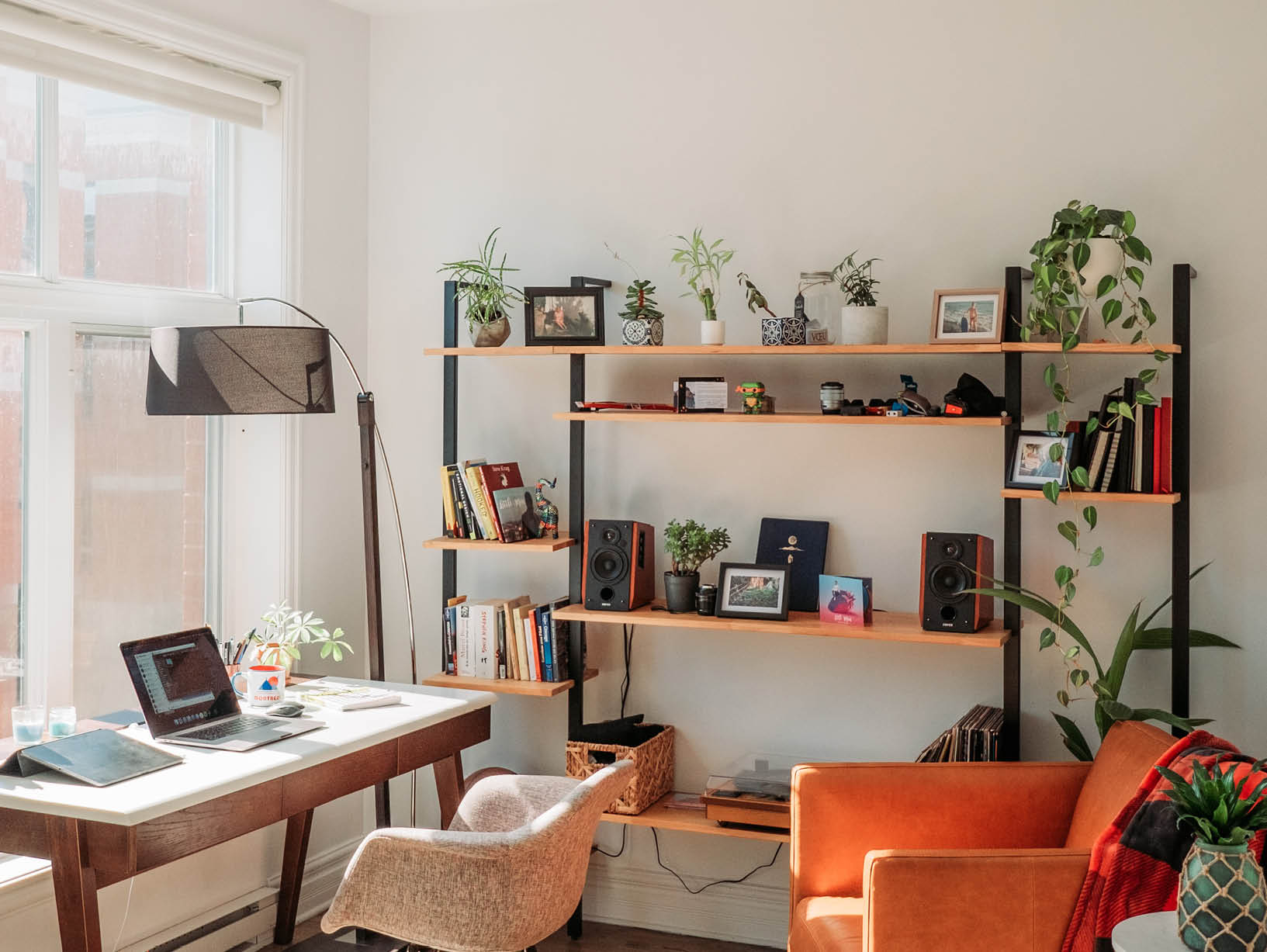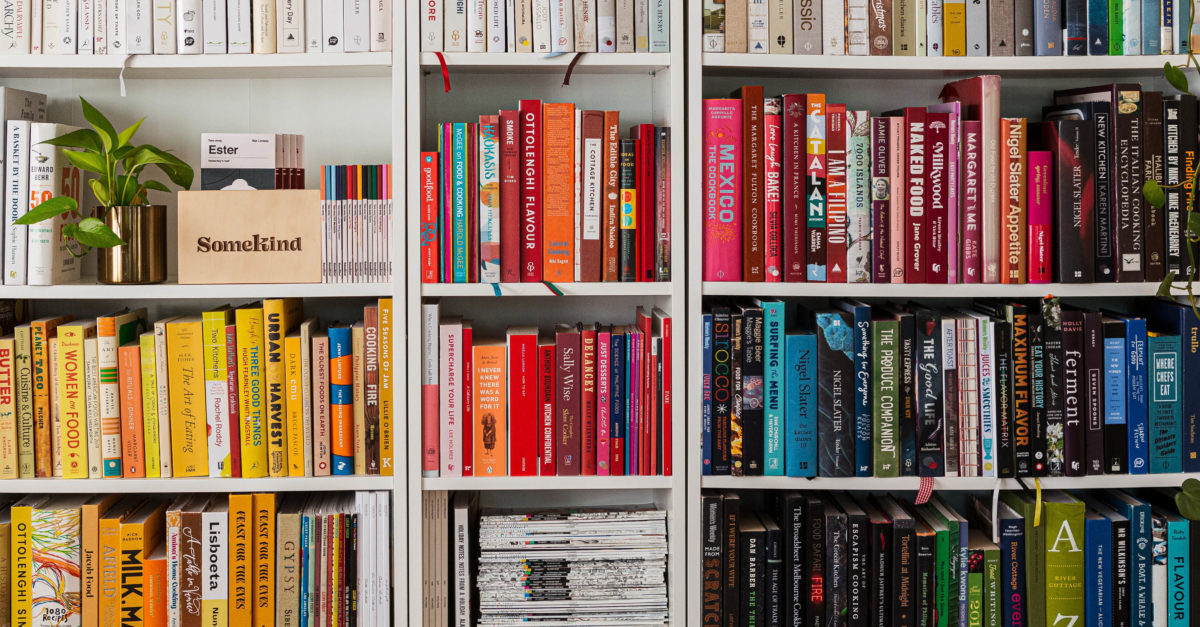How to Be Shelf-Aware
© Luisa Brimble | Photography as noted.
Ages ago, the Greek philosopher Epictetus called books “the training weights of the mind.”
And if books fulfill this role of weights that strengthen our minds, then bookshelves would be our literary home gyms that store and categorize our paperbacks and hardbacks. But in the twenty-first century, they do so much more.
This has been made evident during the COVID-19 pandemic, when many people began working from home more frequently. Whether you’ve been in meetings with coworkers or watching podcasts or interviews on TV, you likely noticed that many people positioned themselves in front of their home library or chose a bookshelf background filter. In no time, bookshelves had become a hot decor accessory.
These pieces of furniture have always told a story, but the story is very different today. The books and other items they hold reveal something about the person who owns them, whether it’s their literary chops or a glimpse into their personality.

A Bookshelf Preface
If you’re considering adding a bookshelf to your home, it’s important to establish where you’ll utilize it, how you’ll do so, and what you’ll want your bookshelf to say. But first, you have to decide which type suits you and your space best.
Flexibility is the primary benefit of standalone versions, as they are more affordable and can be moved around a room, within a home, and from home to home. The upside of built-ins is that they can give you a good return on investment (ROI) because they’re eye-catching and space-saving.

Context Matters
According to experts, you should treat your bookshelf much like you would any other piece of furniture, so decide which room it will be in (if it’s a movable object), take a step back, look at the overall space with the empty bookshelf in it, and gauge how it would fit best.
For example, ask yourself if the bookshelf color matches the room’s overall palette. If it doesn’t, you may want to paint it to complement the rest of your decor. In addition, a hot trend is to maximize unused spaces, such as an understairs area, by adding built-in bookshelves to them.

Your Books
Now that you’ve determined where your shelving unit will be and how it will fit into the room, you need to ask yourself about form and function: what’s your purpose for this piece of furniture? It could simply be a place to store books and other items that would otherwise clutter your home, but it can also serve many other functions.
The key is being intentional with the objects that will go onto the shelves. Let’s start by discussing the star of this show, your books. Some fundamental questions will immediately pop into your head, such as Which should I select? How many are too many? and How
should I arrange them?
Keep in mind that, through your choice of books, you’ll be making yourself, your interests, and even your beliefs somewhat of an open book. So perhaps you want to highlight your love of classics, books by your favorite author, or only books you’ve read. You could always do all three by dedicating a shelf to each.
And, yes, people sometimes have nothing but books on their shelves. If your paperbacks and hardbacks are your sole decor tool, decide how you want them to look overall by considering your organization. For example, you could group your books by size, with smaller, lighter paperbacks on higher shelves and heavier hardbacks on lower shelves for practicality.
You may also wonder if they should be stacked vertically or horizontally. Why not both? When you have some areas with books upright and others laid down, it adds interest and prevents your furniture from looking like a library.
You could also choose to separate colors on different shelves, or you could opt to only display books that match the color surrounding the bookshelf: for example, blue books to match the blue wall paint behind it. Another trend is to reverse the books so that the pages are facing outward, thus guaranteeing a consistent white/neutral palette (but this tends to fall into the love-it-or-hate-it category).
Perhaps most important is the focal point. Much like you should do with artwork, you should keep the books you want people to see first at eye level.

Your Accessories
If your books are going to tell a story, what accompanies them on your shelves will as well. You could add any number of items to enhance your bookshelf aesthetic. Here are just a few examples of how to go about it.
• Plants are a popular choice for bookshelves. Placing a small plant or two on shelves will add not only a natural touch but also a pop of color.
• People often think that bookends are only for desks, but they can also be bookshelf statement pieces. For example, if you love reading about dogs, group your canine-themed books on one shelf with dog bookends.
• Choose a basket that matches the bookshelf’s overall theme, which can serve as a convenient place to store blankets or your kids’ toys. Keep it on a low shelf for easy access.
• Don’t forget about the books themselves. A few stacked books could hold a favorite knickknack; for example, you could have a family vacation photo resting atop a few travel books.
• Utilize the inside back of your bookshelf as an accessory unto itself. You could add contact paper to this area so that your personal style is on display behind your books. Or, if you have white built-ins, you could paint this area a bright color for more pop.
• Overall, balance is key to a good bookshelf, so you may want to be somewhat of a minimalist. Accessories can blend with your books to create an overall aesthetic, but they shouldn’t overwhelm them. That said, be you! It’s fine if you’re a maximalist at heart, as long as you’re organized about it.
Someone once pondered anonymously, “What is a bookshelf other than a treasure chest for a curious mind?” In 2022, this is even truer, both for bookshelf owners and their audiences. Whether you see a bookshelf as merely functional furniture or a personal literary or fashion statement, one thing is for sure: it’s a great way for people to read more about you.






















